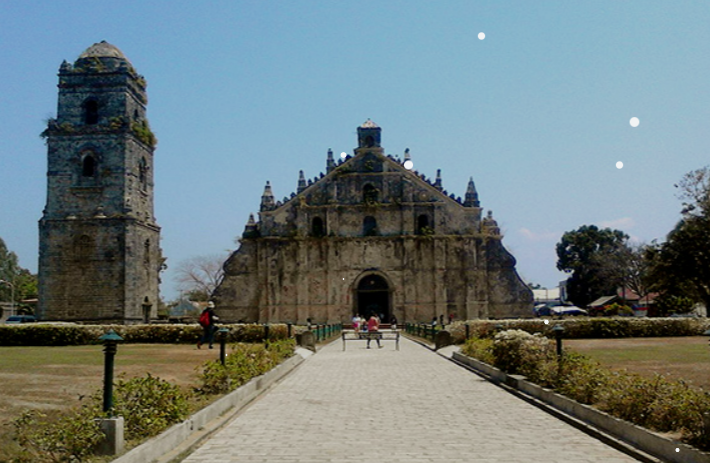Cultural Heritage of the Philippines: A Rich Tapestry of Tradition and Legacy

The Philippines, an archipelago of over 7,000 islands, is a country with a rich history and an even richer cultural heritage. From pre-colonial societies, through Spanish, American, and Japanese occupations, the Philippines has become a melting pot of various influences, resulting in a unique cultural tapestry. This article will delve into the wonders of the cultural heritage in the Philippines, answering some pressing questions many have about this Southeast Asian gem.
Also Read:- Greatest Architects-Best Architects In The World
How Many Cultural Heritages are There in the Philippines?
UNESCO, the United Nations Educational, Scientific, and Cultural Organization, recognizes several sites and practices from the Philippines on its World Heritage List. As of my last update in 2022, there are a total of 9 UNESCO inscriptions: 5 cultural, 3 natural, and one mixed (both cultural and natural). These provide just a glimpse into the immense cultural and natural wealth the Philippines holds.
What is the Cultural Culture in the Philippines?
The term “cultural culture” might seem redundant, but it points to the essence of Filipino identity. The Philippines has a myriad of traditions, arts, crafts, and practices that are rooted in various historical, religious, and ethnic backgrounds. Its cultural culture can be seen in its festivals, dances, music, art, and even its culinary delicacies. The harmonious blend of indigenous traditions with influences from Asia, Europe, and the Americas makes the Philippine culture both diverse and unified.
What are Some Cultures in the Philippines?
Diving deeper into the cultural landscape, here are some facets that showcase the country’s diverse traditions:
- Festivals: Celebrations like Sinulog in Cebu, Panagbenga in Baguio, and Ati-Atihan in Kalibo are just a few of the numerous festivals that celebrate history, religion, and local customs.
- Traditional dances: The graceful Tinikling, the spirited Maglalatik, and the romantic Pandanggo sa Ilaw represent stories, regions, and historical events.
- Arts and crafts: From the woven fabrics of the Ifugao to the intricate tattoos of the Kalinga, Filipino craftsmanship shines brightly.
- Music: Beyond the modern tunes, traditional sounds from instruments like the kulintang, kudyapi, and gangsa still resonate today.
List of Cultural Heritage in the Philippines
- Baroque Churches: These Spanish-era churches, scattered across different islands, showcase the intricate European architecture of the 16th to 18th centuries.
- Historic Town of Vigan: A beautifully preserved town that gives a glimpse into the Philippines’ Spanish colonial past.
- Rice Terraces of the Philippine Cordilleras: Stunning landscapes carved by the Ifugao people, these terraces have been used for rice cultivation for thousands of years.
- Mount Hamiguitan Range Wildlife Sanctuary: A biodiversity hotspot housing a variety of endemic species.
- Tubbataha Reefs Natural Park: A marine sanctuary with pristine coral reefs, showcasing the country’s rich underwater biodiversity.
- Apo Reef Natural Park: Another marine treasure teeming with life and vibrant corals.
- Palawan Underground River: A natural wonder that combines spectacular limestone formations with a navigable underground river.
- Petroglyphs and Petrographs of the Philippines: These ancient artworks carved on rocks tell stories of the early inhabitants of the islands.
- Mayon Volcano: With its perfect cone shape, this active volcano is not only a symbol of nature’s beauty but also its power.
In conclusion, the Philippines’ cultural heritage is a testament to its storied past and the resilience of its people. Through centuries of change, conquests, and adaptations, Filipinos have managed to retain and celebrate their unique identity. Today, these traditions, sites, and practices stand not just as mere attractions, but as pillars of Filipino pride and identity. They invite everyone to look deeper, understand more, and celebrate the intricate web of histories that have shaped this nation. Whether you’re a traveler, a history enthusiast, or simply curious, the Philippines has a rich tapestry waiting to be explored.
FAQs on the Cultural Heritage of the Philippines
- What exactly is meant by ‘cultural heritage’?
- Cultural heritage refers to the legacy of tangible artifacts (like buildings, monuments, landscapes, books, works of art) and intangible attributes (such as folklore, traditions, language, and knowledge) that are inherited from past generations, maintained in the present, and bestowed for the benefit of future generations.
- Why is the cultural heritage of the Philippines significant on a global scale?
- The Philippines’ cultural heritage offers a unique blend of indigenous, Asian, European, and American influences. Its UNESCO World Heritage Sites and rich traditions provide a deeper understanding of Southeast Asian history, colonization impacts, and the resilience of island nations.
- How can I experience Filipino culture firsthand?
- Attend local festivals, visit historical sites and museums, engage with local artisans, try Filipino cuisine, participate in traditional dances, and immerse yourself in local communities to get an authentic experience.
- Are there any threats to the Philippines’ cultural heritage?
- Yes, like many countries, the Philippines faces challenges like urbanization, climate change, economic pressures, and lack of awareness or resources, which can threaten both tangible and intangible cultural heritages.
- How are the local communities involved in preserving the cultural heritage?
- Local communities play a vital role in maintaining traditions, rituals, and practices. They are often the primary stakeholders in heritage sites and practices, ensuring the transmission of knowledge to younger generations and actively participating in conservation efforts.







